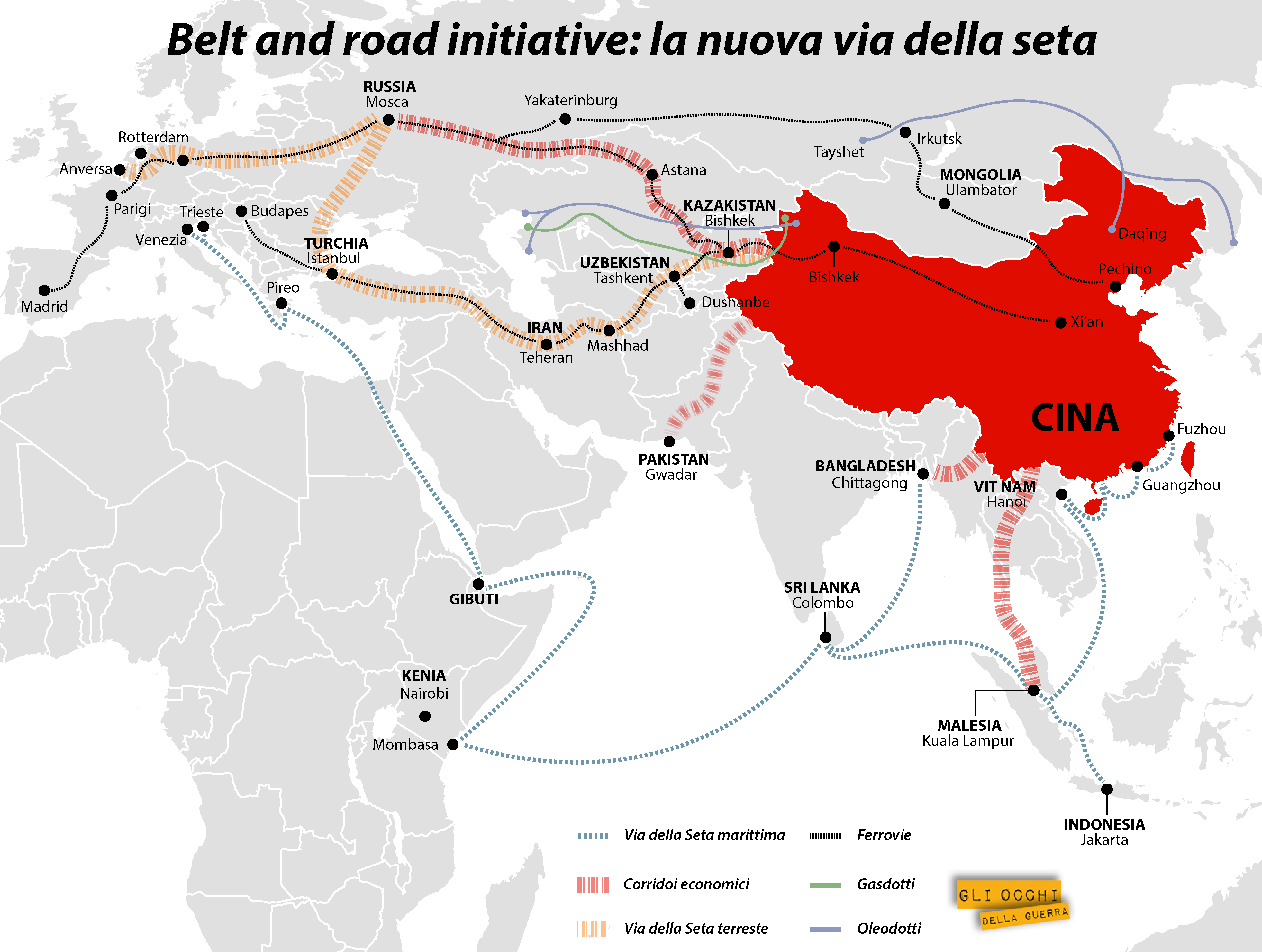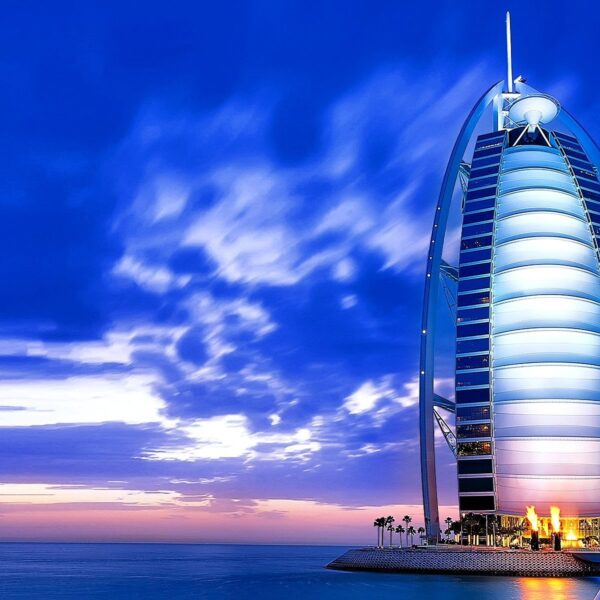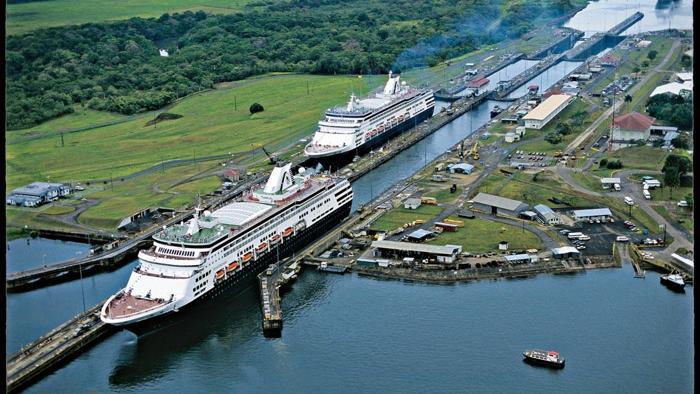The new Silk Road
The new Silk Road is one of the most ambitious projects in the last decades, and it has China as one of its protagonists, because of the necessity of the country to further expand its economy to achieve the economic growth forecast for the next years, which is a GDP growth of at least 6.5 % and a GDP per capita increase. In order to accomplish these results China has proposed an enormous project connecting the Chinese economy to the countries that will be crossed by a terrestrial and a marine way. The whole project includes at least 60 countries, about 4.4 billions people, about the 63% of the world population and the 29% of the world GDP. The entire work, according to some evaluations, would cost more than 1000 billions dollars, then collaboration among the countries is unthinkable. China has also suggested the establishment of the Asian Infrastructure Investment Bank (AIIB), provided of assets amounting to 100 billions of USA dollars, about 30 of which provided by China and 45 by other Asian countries such as Russia, India and by Oceania.
The project
The new Silk Road is officially named “One Belt One Road” OBOR and consists in two routes:
Terrestrial Route: including three different routes connecting Europe, South-East Asia and the Middle East
- one of the terrestrial routes originates in Xi’an, a city situated in the middle of the country, and winds across the centre of Asia, which is Kazakhistan, Russia (Mosca) eventually heading to the Baltic Sea.
- In Xi’an originates another terrestrial route running through the Middle East , specifically Islamabad (Pakistan), Teheran (Iran), Istanbul (Turkey).
- Finally a third route originates in Kunming, and it crosses South East Asia, through countries such as Thailand and Burma, coming to an end in Delhi, India.In particular, an high speed railway originates right in Kunming and spreads itself towards Laos, Cambodia, Malaysia, Burma, Singapore, Thailand and Vietnam.
Marine Route: including two routes, one arriving to Europe through the Indian Ocean and the Red Sea and the other one reaching the Pacific Islands through the China Sea.
- one route originates in the harbour of Fuzhou and crosses the Indian Ocean reaching Malaysia, Sri Lanka and the Red Sea, connecting Europe up to Rotterdam.
- the second route still originates in Fuzhou and reaches the Pacific Islands through the China Sea.
The Asian giant has already started the construction of an 8000 miles long freight transport railway, that will allow to connect Yiwu to Madrid and a rail line originating in Kashgar and heading to Pakistan and then to Arabic Sea. China already possesses great infrastructures and has the necessity to improve the connection among them.


Pros & cons:
Once completed, the project will create a network of connections among several countries with China, the first Asian economy, as its fulcrum. It’s possible to sum up the benefits in two main points:
- Improvement of the governmental dialogue among the connected countries.
- Facilitation of people and goods transport bt increasing commercial volumes and cultural exchanges.
China can surely just make profits out of such a project, because it would increase the number of exported goods, as a way of easily satisfying the enormous internal production, preventing the devaluation of the national currency and increasing its own economic power at the main expense of the USA, that are literally cut out of the project.
However, it must be said that there are several potential risks, because the lack of an adequate economic agreement among the countries could lead to a commercial imbalance, in which the importation of foreign products, especially Chinese, would end up being greater than the exportation. If this actually happened, China would become wealthier and more powerful and the other countries impoverished. Therefore,it will be possible to gain the above-mentioned benefits only by reaching fair agreements.
Useful links:
picture by: Le rotte della Nuova via della Seta (Alberto Bellotto)






